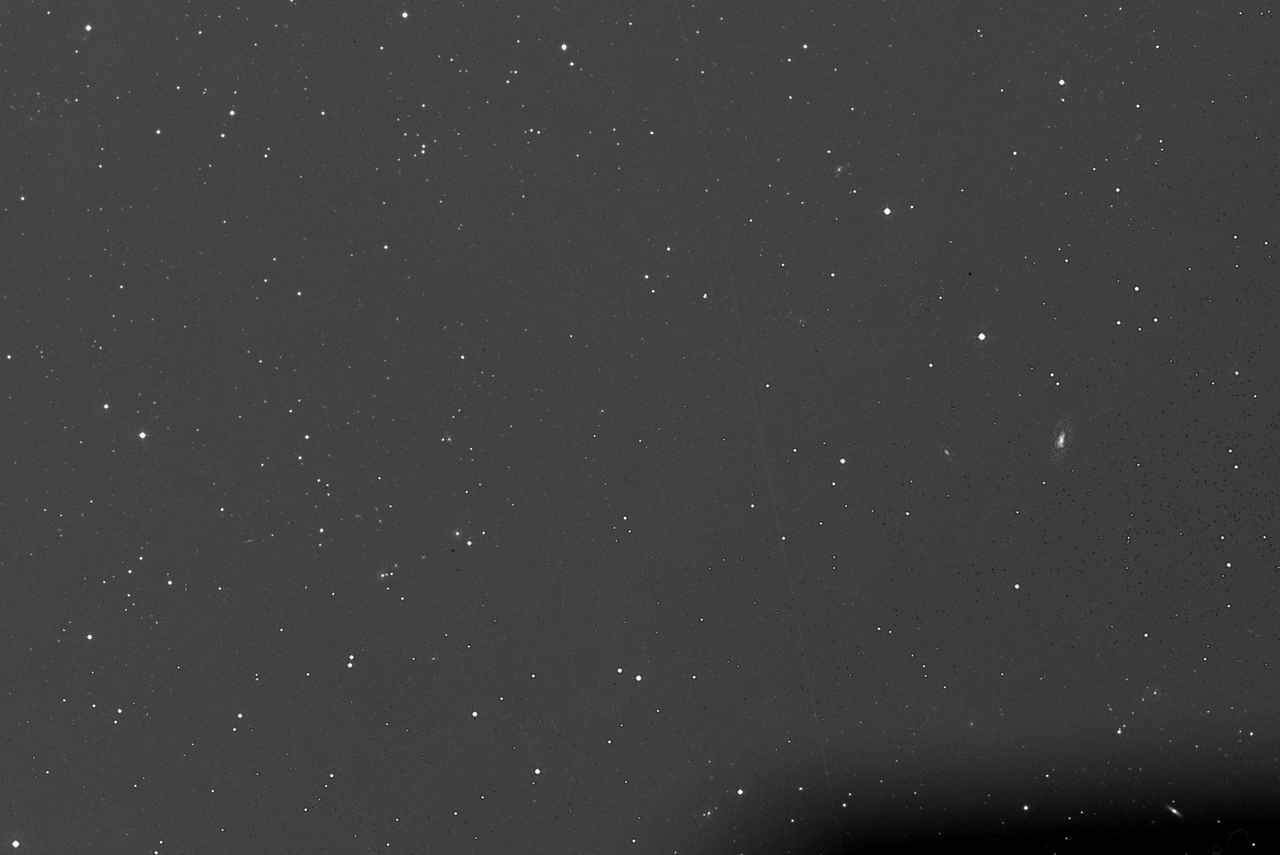Europa Clipper
Europa Clipper is in the constellation of Leo, at a distance of
Mission Objectives
The goal of NASA's Europa Clipper mission is to determine if Europa, the smallest of Jupiter's Galilean Moons, possesses conditions suitable for life. In particular, Europa Clipper will: seek definitive evidence of the existence of a vast water ocean beneath Europa's thick ice crust; analyze the chemical composition of Europa's surface, atmosphere and potential ocean; perform geologic measurements and find evidence of geothermal activity.
Launch, Trajectory and Timeline
Europa Clipper was launched on
After its arrival, Europa Clipper is planned to complete
The mission is planned to end in
Interesting Facts
With its dry mass
The spacecraft carries a tantalum plate carrying engravings of the poem "In Praise of Mystery: A Poem for Europa" by U.S. Poet Laureate Ada Limón, the Drake Equation, and over 2.6 million names submitted by the public (including TheSkyLive author's!).
Finder Charts
The sky charts below show, at different resolutions, the position of Europa Clipper in the sky. Click on each chart to access the interactive star map tool.
The following map uses photographic imagery from the Digitized Sky Survey (DSS) to realistically visualize the precise position of Europa Clipper against the stars in the background. The horizontal size of the map measures 60 arcminutes. Click on the image to access a more detailed full-screen view.


Equatorial Coordinates
Apparent
J2000
Additional Information
Rise and Set Times
The following table lists today's rise, transit and set times of Europa Clipper from Greenwich, UK (all times relative to the local timezone Europe/London):
If you need to access this information frequently for your observations, you can create a simple customized Quick Access page, so that you can easily bookmark it in your browser favorites or add a shortcut to your mobile phones' home screen.
Distance from Earth
The distance of Europa Clipper from Earth is currently
The following graph shows the distance of Europa Clipper from Earth as a function of time. In the chart the distance is measured in Astronomical Units and the data is sampled with an interval of 1 day.
Note: The values in this chart may not be entirely accurate around the time of closest approach for objects passing very close to Earth at high speed (e.g., Near-Earth Objects).
The value of the distance of Europa Clipper from Earth is also available as a real time updated value in the live position tracker.
Closest Approach to Earth
In the period between October 15, 2024 and February 6, 2031, the closest approach of Europa Clipper to Earth will happen on Friday 4 December 2026 at a distance of 0.001095 Astronomical Units, or 163,855 kilometers:
Note: the values for the closest approach are computed with a sampling interval of 1 day.
Orbit Visualization
The following chart is a 3D animated visualization of the orbit of Europa Clipper relative to the other major objects in the Solar System.
15 Days Ephemeris
The following table lists the ephemerides of Europa Clipper computed for the past and next 7 days, with a 24 hours interval. Apparent celestial coordinates are provided.
| Date | Right AscensionR.A. | DeclinationDec. | MagnitudeMag | Constellation |
|---|---|---|---|---|
| Jun 26 2025 | 10h 04m 24s | +13° 37’ 32” | N.A. | Leo |
| Jun 27 2025 | 10h 06m 00s | +13° 28’ 22” | N.A. | Leo |
| Jun 28 2025 | 10h 07m 36s | +13° 19’ 10” | N.A. | Leo |
| Jun 29 2025 | 10h 09m 13s | +13° 09’ 57” | N.A. | Leo |
| Jun 30 2025 | 10h 10m 48s | +13° 00’ 41” | N.A. | Leo |
| Jul 01 2025 | 10h 12m 24s | +12° 51’ 23” | N.A. | Leo |
| Jul 02 2025 | 10h 14m 00s | +12° 42’ 03” | N.A. | Leo |
| Jul 03 2025 | 10h 15m 36s | +12° 32’ 40” | N.A. | Leo |
| Jul 04 2025 | 10h 17m 12s | +12° 23’ 17” | N.A. | Leo |
| Jul 05 2025 | 10h 18m 48s | +12° 13’ 50” | N.A. | Leo |
| Jul 06 2025 | 10h 20m 24s | +12° 04’ 23” | N.A. | Leo |
| Jul 07 2025 | 10h 22m 00s | +11° 54’ 53” | N.A. | Leo |
| Jul 08 2025 | 10h 23m 36s | +11° 45’ 22” | N.A. | Leo |
| Jul 09 2025 | 10h 25m 12s | +11° 35’ 48” | N.A. | Leo |
Additional Resources on TheSkyLive
- Europa Clipper: Complete reference information on TheSkyLive.com.
- Where is Europa Clipper?: Key information on where to find Europa Clipper in the sky.
- Distance of Europa Clipper from Earth: Find out how far Europa Clipper is from Earth right now.
- Rise and Set Times: Rise and set times of Europa Clipper from your location.
- Interactive Sky Map: Planetarium-style interactive visualization of Europa Clipper's position in the sky.
- Live Position Tracker: High precision real time tracker of Europa Clipper's position using deep space imagery.
- Ephemeris: 15 days Europa Clipper's computed ephemeris.
- Orbit Visualization: 3D interactive visualization showing the orbit of Europa Clipper with respect to the major Solar System objects.










